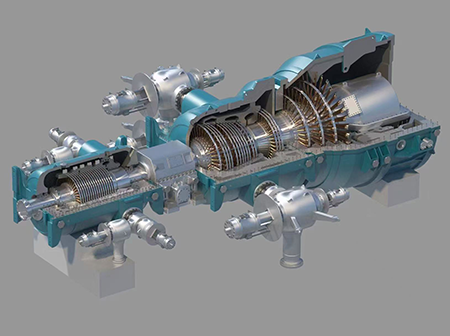
The Economic Benefits of 3D Printing for Industrial Models
Introduction
The advent of 3D printing, also known as additive manufacturing, has revolutionized various industries by enabling rapid prototyping, customization, and cost-effective production. In the realm of industrial modeling, 3D printing offers significant economic advantages, including reduced material waste, shorter lead times, and enhanced design flexibility. This paper explores the key economic benefits of 3D printing for industrial models, analyzing its impact on production efficiency, supply chain optimization, and innovation.
1. Cost Reduction in Prototyping and Production
One of the most significant economic advantages of 3D printing is its ability to reduce costs in prototyping and small-scale production. Traditional manufacturing methods, such as CNC machining or injection molding, require expensive tooling and molds, which can be cost-prohibitive for small batches. In contrast, 3D printing eliminates the need for tooling, allowing manufacturers to produce industrial models directly from digital designs.
1.1 Elimination of Tooling Costs
Traditional manufacturing often involves high upfront costs for molds, dies, and machining setups. For industrial models, which may undergo multiple iterations before finalization, these costs can accumulate rapidly. 3D printing bypasses this requirement, enabling manufacturers to produce models without additional tooling expenses.
1.2 Lower Material Waste
Subtractive manufacturing processes, such as milling or turning, generate substantial material waste by removing excess material from a solid block. 3D printing, however, builds objects layer by layer, using only the necessary material. This efficiency reduces raw material costs and minimizes waste disposal expenses.
1.3 Reduced Labor Costs
Since 3D printing is largely automated, it requires less manual intervention compared to traditional manufacturing. Skilled labor is still needed for design and post-processing, but the overall labor costs are lower due to decreased assembly and machining requirements.
2. Faster Time-to-Market
Speed is a critical factor in industrial model development, particularly in competitive industries where rapid innovation is essential. 3D printing accelerates the design-to-production cycle, offering several time-related economic benefits.
2.1 Rapid Prototyping
Engineers and designers can quickly produce functional prototypes using 3D printing, allowing for faster testing and refinement. This agility reduces the time required for product development, enabling companies to bring industrial models to market sooner.
2.2 On-Demand Manufacturing
Unlike traditional manufacturing, which often involves long lead times for tooling and production setup, 3D printing allows for on-demand manufacturing. Companies can produce industrial models as needed, reducing inventory costs and avoiding overproduction.
2.3 Shorter Supply Chains
By enabling localized production, 3D printing reduces dependency on global supply chains. Manufacturers can produce industrial models in-house or at nearby facilities, minimizing shipping delays and transportation costs.
3. Enhanced Customization and Design Flexibility
Industrial models often require customization to meet specific engineering or client requirements. 3D printing excels in this regard, offering unparalleled design flexibility that translates into economic advantages.
3.1 Complex Geometries at No Extra Cost
Traditional manufacturing struggles with intricate designs, often requiring additional machining or assembly steps. 3D printing can produce complex geometries—such as lattice structures or internal channels—without increasing production costs.
3.2 Mass Customization
Industries such as aerospace, automotive, and medical devices benefit from customized industrial models tailored to unique specifications. 3D printing allows for cost-effective customization, eliminating the need for expensive retooling.
3.3 Iterative Design Improvements
Since modifications can be made digitally and printed quickly, engineers can refine industrial models iteratively without significant cost penalties. This flexibility enhances product quality while keeping development expenses manageable.
4. Supply Chain Optimization
3D printing contributes to more efficient supply chains by reducing dependency on external suppliers and minimizing logistical complexities.
4.1 Reduced Inventory Costs
With on-demand 3D printing, companies can maintain digital inventories instead of physical stock. This approach reduces warehousing costs and minimizes the risk of obsolete inventory.
4.2 Spare Parts and Legacy Components
Industries relying on legacy equipment often face challenges in sourcing discontinued parts. 3D printing enables the economical production of spare parts on demand, eliminating the need for costly bulk orders or long lead times.
4.3 Decentralized Manufacturing
By adopting distributed manufacturing models, companies can produce industrial models closer to end-users, reducing shipping costs and lead times. This decentralization enhances supply chain resilience, particularly in times of disruption.
5. Sustainability and Long-Term Cost Savings
Beyond immediate cost reductions, 3D printing offers long-term economic benefits through sustainability and resource efficiency.
5.1 Energy Efficiency
While 3D printing consumes energy, certain processes (such as selective laser sintering) are more energy-efficient than traditional machining for small-batch production. Over time, this efficiency translates into cost savings.
5.2 Recyclable Materials
Many 3D printing materials, including certain polymers and metals, can be recycled or reused, further lowering material costs and environmental impact.
5.3 Extended Product Lifespan
By enabling easy repairs and part replacements, 3D printing helps extend the lifespan of industrial equipment, reducing long-term capital expenditures.
6. Competitive Advantage and Market Opportunities
Companies leveraging 3D printing for industrial models gain a competitive edge through innovation and responsiveness.
6.1 Faster Innovation Cycles
The ability to rapidly prototype and test new designs allows businesses to innovate faster than competitors relying on traditional methods.
6.2 New Business Models
3D printing enables novel business approaches, such as digital inventory and on-demand manufacturing services, opening additional revenue streams.
6.3 Access to Niche Markets
Small-batch and customized industrial models can cater to niche markets that were previously economically unviable with conventional manufacturing.
Conclusion
3D printing presents substantial economic benefits for industrial model production, including cost savings, faster time-to-market, enhanced customization, and optimized supply chains. By reducing material waste, eliminating tooling expenses, and enabling rapid prototyping, additive manufacturing enhances efficiency across the product lifecycle. Furthermore, its sustainability advantages and potential for decentralized production contribute to long-term cost reductions. As industries continue to adopt 3D printing, its economic impact will only grow, solidifying its role as a transformative technology in industrial modeling.
(Word count: ~2000)
Este sitio web utiliza cookies para garantizar que obtenga la mejor experiencia en nuestro sitio web.
Comentario
(0)